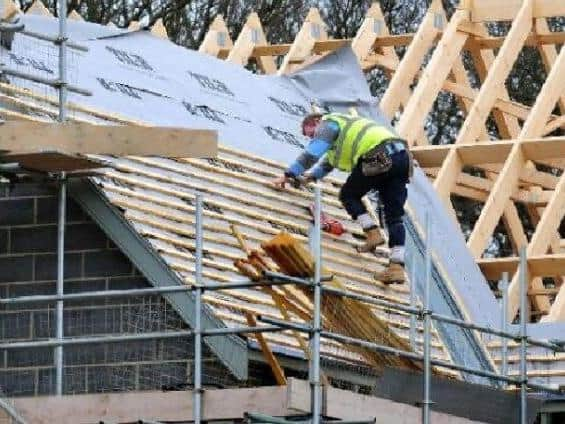Confusion over how long "safeguarded land" in Chorley is protected from development
and live on Freeview channel 276
Under government legislation, local authorities can identify certain areas as “safeguarded land”, meaning they do not intend to release it for housing or commercial uses for the duration of their ‘local plan’ - a document which dictates development for between 10 and 15 years.
However, safeguarded plots are likely to be earmarked for building over the longer term.
Advertisement
Hide AdAdvertisement
Hide AdAs part of a consultation to create a new local plan for the whole of Central Lancashire, Chorley has been asking residents whether it should scrap the idea of safeguarding within its borders.


Council leader Alisiatir Bradley said that the phrase can be “misleading”.
“We’re looking to simplify the terminology and only include land in the local plan that it is felt is suitable for development during that plan period – in this case up until 2036.
“People assume safeguarded land is protected from development when it is not – it is land that is identified for development but at a later point in time,” Cllr Bradley said.
Advertisement
Hide AdAdvertisement
Hide AdBut the Local Democracy Reporting Service also understands that in order to identify a comprehensive list of safeguarded sites, Chorley may have been forced to turn to its extensive areas of greenbelt - which are already protected indefinitely from development in all but exceptional circumstances and so would not have required an additional short-term defence.
Indeed, by listing a greenbelt plot as “safeguarded”, the authority could have risked opening it up for development in decades to come. There are no plans to revise the greenbelt boundaries anywhere in Chorley, South Ribble or Preston as part of the ongoing local plan process.
However, Lancashire county councillor Aidy Riggott, who represents Euxton, Buckshaw and Astley, said residents in the area had been alarmed by the proposed changes.
“How can they be reassured what will happen to their valuable green fields and open spaces as we approach the end of the forthcoming plan? Will the field behind their newly bought house suddenly appear in the next plan as allocated for housing?
Advertisement
Hide AdAdvertisement
Hide Ad“These are the questions I have frequently been asked in both Euxton and Whittle-le-Woods where the current approach of having a safeguarded land policy gives that forewarning to communities which has enabled those determined to fight unwanted and inappropriate development to organise and make strong representations.
“The question is buried right at the end of the consultation document where only the most assiduous of respondees will spot this question. It asks you to agree to remove an existing policy with no detail as to why this change is being made or how this will be handled in the future,” County Cllr Riggott said.
The Central Lancashire local plan “issues and options” consultation ends on 14th February. A further public consultation into the “preferred options” is expected during summer 2021.
An inquiry in public by a planning inspector will follow, with the local plan expected to be finalised no earlier than December 2023.
SAFE AS HOUSES?
Advertisement
Hide AdAdvertisement
Hide AdDevelopers can attempt to secure permission to build on safeguarded land even before a local plan has expired if the local authority cannot demonstrate that it has a five-year supply of land available for housebuilding, as required by the government.
In Euxton, developer Gladman attempted to lay claim to a safeguarded plot between School Lane and Pear Tree Lane on that basis - on three occasions in as many years. The application was refused each time, including on appeal to a planning inspector.